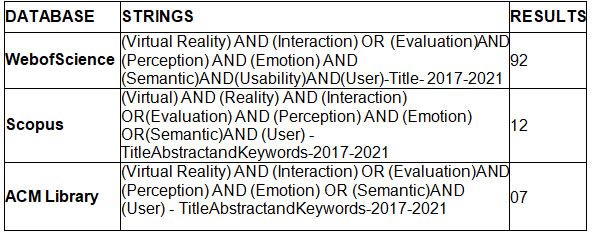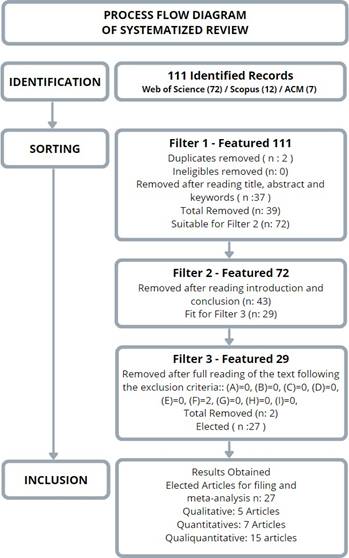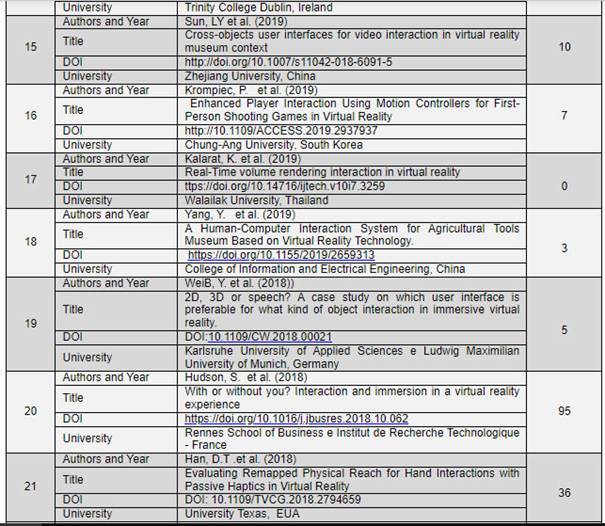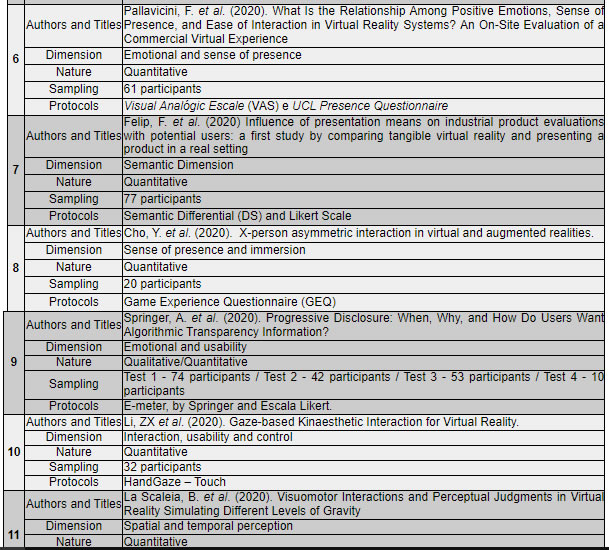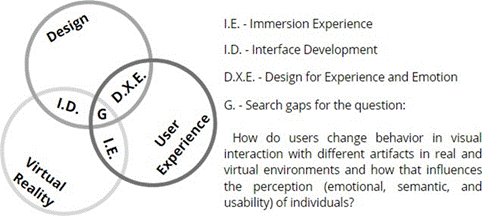IntroductionTable 2
Design,asaprojectarea,offersmethods,strategies,andmetricsfordevelopingproducts, whether they are real/physical, or digital/virtual. Therefore, it aims at theadequacy of these products to their users, to meet the needs of practical, aesthetic,and symbolic use, the desires and specific capabilities of those who use the object.Designisalsoresponsibleforunderstandingtheuser'srelationshipwiththeartifact.It seeks to verify whether the ergonomic, hedonic, emotional, semantic, symbolic,and social demands of people have been properly met by the products.
For this, qualitative and quantitative information collection methods are used.Thesemetricshelpandguideimportantstrategicdecision-makingforthedevelopmentand improvement of products that are increasingly suited to humanneeds. Within the Design and Human Factors areas, there are lines of research suchasHuman-Computer Interaction (HCI), User-Centered Design, and Design for Emotion.
WhenitcomestoProductDesignDevelopment,users'cognitive,psychological, and emotional factors can go unnoticed and interfere with the qualityof the user experience. As suggested by Chapman (2005), any object (no matter howcomplex) can generate intense experiences for users and each project/design decision(no matter how small) can influence the perception of these experiences.
Asforsensations, the perceptions, aesthetics, and experience in the use ofartifactscanbeshapedbyvariousaspectsofproductdesign.Thefactorsofmateriality and aesthetics of objects, such as shape, color, texture, size, and weightcaninfluencetheinteractionofhumanandartifact,andconsequently,theexperiences derived from its use (LOBACH, 2001). Usability factors such as HCI,comfort, safety, efficiency, and effectiveness also have the potential to influenceusability (IIDA E GUIMARÃES, 2016); in addition to subjective factors, such assemiotics, values, and added symbols of status or stigmas (BURDEK, 2010).
Therefore,itisnecessarytoobservethatthe configurative elements thatmakeuptheartifactsaregroupedintomacroelements(shape, material, surface,color, etc.), through which their configuration is determined, and microelements thatalso participate in the general impression of the configuration (such as screws, rivets,nuts, fittings, among others) (LÖBACH, 2001). For the author, a good project alsohas,atitscore,thetaskofmeeting the demands of users through relationshipsestablishedduringuse.Thus,artifactscarrywiththemandperformpractical,aesthetic, and symbolic functions.
Observation technique is understood as a complex practice, which involvespsychic functions of cognition, intellect, memory, and desire. During the process, theobserver is inserted within a social, institutional, technical, and ideological context,based on emotional stimuli, previous experiences, perspectives, and their own pointsofview.Duetothis,thedesignorientedtowardscognitiveandemotionalaspectsisagreatchallengeforthedesignpracticebecauseemotionsarestrictlypersonal(DESMET,2002; DESMET,2003).
Desmet and Hekkert (2000) propose, in their work, the idea of a model ofproductemotions,generallydescribingtherulesthroughwhichproductsarouseemotionsinvolvingOperationalInterests(utilitarian,social,affective,andcognitive artifacts. Prior to their use, they are either seen as desirable or undesirable).NormativeInterests(standardsandnorms,accordingtowhichwe believe thatartifacts should be based on, products that meet these requirements generate pleasantemotions;whenopposedtotheseprinciples,theygeneratedispleasure).The AppreciativeInterests,inturn, depend on personal dispositions of either likingsomething or not.Jordan(1999)alsoinvestigateddifferentsourcesofpleasurerelatedtoobjects.Heproposedthattheycanbephysiological(bodilysensations),psychological (‘self-related gains’), sociological (social interaction), and ideological(sensory stimulation).
Virtual Reality technology and itspotentials
Virtual Reality (V.R.) is described by Braga (2001) as an advanced interfacetechnique, in which the user performs immersion, navigation, and interaction in athree-dimensional artificial environment, digitally modeled and computer generated,through multi-sensory pathways. The author adds that these V.R. based interfaceshave as their main characteristics being immersive, intensive, interactive, illustrative,and informative.
V.R. can be briefly understood from the concepts proposed by Jerald (2015), towhomthe technology is defined as a digital computing environment that can beinteractively experimented with as if it were a real environment. For Tori (2020), thistechnology makes it possible to create alternative realities capable of simulating realenvironments and systems, as well as creating experiences that are only possible inthe virtual environment. The author also adds that the potential for applications ofthis technology is wide, as it allows to witness real-world experiences and others thatcan be imagined, at low cost and practically without risk to the user. V.R. can alsoinfluence users' emotions: Caldas et al. (2020) suggest that scenario strategies can beused to separately influence the dimensions of emotion and presence, and can inferemotional and arousal engagement.
Using metrics from the field of User Experience, Design for Experience andEmotional Design, combined with Virtual Reality Technology as an auxiliary tool,couldprovidegreaterdynamismandmethodologicalflexibilityinDesignresearch.Inthisscenario,V.R.emergesasanalternativethatcancontributetotheimprovement of environments and artifacts, facilitating the process of development,design,andevaluationofproducts,inthedimensionsofsatisfaction,apparentusability,pleasantness,emotionalperception,andsemanticperception,whichespecially involve visual interaction.
Itisbasedon the methodological potential of the fields of Design, on thetechnological potential of V.R. and in the current scientific scenario, where healthmeasures of social isolation were imposed as a result of the COVID-19 pandemic,causedbythenewCoronavirus,whichjustifiestherelevanceofthisresearch.Studies on the use of V.R. as an auxiliary tool for researchers at the time of datacollection, outline a new way of using protocols without having direct contact withusers,asituationthatwouldallowthecontinuityofresearchevenincasesoflockdown. It is necessary to search for existing studies in the area, understandingtheir methods and techniques for an understanding of the theme.
Therefore,consideringthescopeofthe present study, the elaboration of aSystematic Literature Review (SLR) about state-of-the-art V.R. and its applicationsas an auxiliary tool for data collection in the area of Design, seeking to understandthefeasibilityofthemethodandtechnology,itspotentialandapplicationsinresearch protocols, was defined as its purpose.
Methodologicalprocedures
ThemethodologicalproceduresproposedbyCrossanandApaydin(2009)were adopted as a basis for this bibliographic review, which guide the collection,analysisandsynthesisofinformation.Thedefinedstepswereaccordingtothe flowchart in Figure 1.
We worked here with the systematic literature review (SLR) of integrative,mixed, sequential exploratory and explanatory classification, of a quantitative andqualitative nature, according to the PICO methodology, structured in: (P) Person - (I)Intervention - (C) Comparison - (O) Outputs (METHLEY, et al. 2014). This way, theresearchquestionwasstructuredin:Howdouserschangebehaviorin visualinteraction with different artifacts in real and virtual environments and howthatinfluencestheperception(emotional,semantic,andusability)ofindividuals?
Therefore, we identify as (P) people "users", (I) interaction "behavioral change", (C)comparison between real and virtual environments, and (O) "outputs" the perceptionof individuals. In addition to the question, the recommendations of the PRISMAchecklist (Preferred Reporting Items for Systematic Reviews and Meta-analysesPrisma Checklist - 2015) are followed, among which is proposed a group of threeresearchersto the development ofthe study.
Figure 1: ResearchFlow diagram. Source: Adapted + from Crossan and Apaydin (2009) performed by theauthors,2022.
Systematicreviewcriteria
After the research question was structured, the planning and delimitation of thesearch parameters for the construction of the protocol criteria to be applied weredefined:1)Studiespublishedinthetimeperiodfrom2017to2021wereincluded.2) The studies were searched in the Web of Science, Scopus, and ACM Librarydatabases,consideredsafeandreliable.3)Only English Language. 4) Inclusioncriteria: a) original articles, b) written in English, c) published in scientific journalsindexed to defined databases, d) from April 2017 (launch of rift technology) to May2021, e) which presents qualitative and/or quantitative results on the user's visualinteraction with the object in a real and virtual environment, f) healthy participants,withoutvisualimpairments,agedbetween18and60.5)Exclusioncriteria: a) non-original or duplicate works, b) not written in English, c) published in books,events, dissertations, course conclusion works, reports, expanded abstracts, d) notindexed to defined databases, e) out of timelines, f) theoretical article that does notpresentquantitativeand/orqualitativeresults,g)participants who are unhealthy,visually impaired, or younger than 18 and older than 60, h) does not meet eligibilitycriteria PICO, i) does not respond to search strings in title, abstract or keyword.
2017 was chosen as the beginning year because, according to Facin (2016),from this year on, a new aspect of V.R. would be commercialized and that wouldrevolutionize the market, with products such as the PlayStation V.R., the HTC Vive,the Microsoft HoloLens, and the Oculus Rift II., designed to support scientific andacademicresearchwithcoverageintheareasofscience,socialsciences,arts,humanities, computing, and technology (RIBEIRO, 2018).
In the next step, the search strings that guided the procedures for trackingarticles on the aforementioned platforms were elaborated. Therefore, the search wasimplemented following the PICO process again (METHLEY, et al. 2014), as seen inTable 1.
The strings were standardized for the 3 platforms (Web of Science, Scopusand ACM Library) and the search was performed on June 2, 2021, following thepreviously established protocol. After a total of 111 articles obtained through thesestrings on the 3 platforms, the filtering steps were established to refine the searchprocess, following the previously defined inclusion and exclusion criteria:
1st Filter - The title, abstract, and keywords of all 111 articles were read, withanaverageforecaststipulatedbytheresearchersofapproving50~100articles.Result: 72 articles approved and 39 articles excluded.
2nd Filter - The introduction and conclusion of the 72 articles approved in thefirststagewereread,withanaverageforecaststipulatedbytheresearchersofapproving 30~50 articles. Result: 29 articles approved and 43 articles excluded
3rd Filter - The 29 complete texts approved were read. From a general criticalanalysisandrecords,questionswereraisedsuchas the place of research and theplace of publication, in addition to the coherence regarding the subject addressed, themethodological quality, the analyzed dimensions (semantics, emotional, usability,amongothers),thenature of the approach (qualitative, quantitative or both), thesamplenumber(n),theprotocolsused,theresults,conclusions,andpossible limitations. Thus, the authors stipulated the maximum approval forecast for the 29articles. Result: 27 articles were approved, 2 of which were removed because theywere considered completely theoretical.
Fortheselectionandorganization of the records obtained, Google Driveplatform in its cloud version was used. After being downloaded, the articles wereindexed for analysis and sorted into folders according to each filter. Spreadsheetswerealsoused for records and filings. All the procedures described in the SRLprocesswererecordedwithinthePRISMAflowdiagram(PAGEet.al.,2020)(Figure 2), following the order and criteria indicated in the tool.
Figure 2: Flow diagram of the Systematized Review based on the PRISMA 2020 model, proposed byPageetal(2020).Source:Theauthors,2022.
Finally, 27 articles were selected for filing, and meta-analysis investigationswerecarriedout,accordingtothe7stepsproposedbyCooper(2010)-[1]Identification/formulationoftheresearchproblem;[2]literaturecollection;[3]collectionofinformationfromeachstudy;[4]evaluationofthequalityofstudies; [5]analysisandsynthesisofstudyresults;[6]interpretationofcollecteddata;and [7] presentation of search results.
These data are presented in Table 2 in descending chronological order (fromthe most recent to the oldest - from 2021 to 2017) and by the number of citations.
Table 3 presents authors,titles,anduniversity(abbreviatedtoUni.),year/journal, DOI and the number of citations, based on Google Scholar data on June2, 2021.
Result and Discussion
Initially, some articles with a significant rate of citations stand out: Hudson etal. (2018), with 95 citations; Debarba et al. (2017), with 74 citations; Han et al.(2017),with39citations;andHanet al. (2018), with 36 citations. This, within ashort period of time (2017-2021), may suggest a growth in research interest in thearea.Amongthesearticles,2 of them were developed in American universities,another 2 in France and another 2 in South Korea, evidencing the popularization ofthisresearch in different continents.
All institutions or research centers appeared only once in terms of number ofpublishedarticles.ThisfactmaysuggestthatresearchinvolvingUX,HCI,EmotionalDesignandUser-CenteredDesign,correlatedtoVirtualReality,maybeinearly stages or be a recent/new topic for these centers/institutions.
In addition, the frequency of publication by continent was identified. Europeancountriesappearedmore frequently, being present in 14 articles. Asian countriesappeared in 11 articles, and North American in 2 articles, while South American,AfricanandOceaniancountriesdonotappearintheresults.ThisfactmaycorroboratetheideapresentedbyRibeiroetal.(2020),regardingthepossibleresearchgapwithexplorationpotentialattheintersectionbetweenV.R.andErgonomics.
Itwasobservedthat the distribution of research results found includes thecountries of the northern hemisphere, which may also suggest a lack of research ofthis type in nations of the southern hemisphere, especially developing countries, suchasBrazilandArgentina.Globally,thedatapresentedindicatethattheresearchinterest in this technology is led by the countries present at the top of the WorldInnovationIndexof2021,anindexthatevaluatestheregistrationofpatents,investment in education, and productivity (Global Innovation Index, 2021).
Analyzing the metadata, a significant number of articles of Quantitative (7),Qualitative (5), and Qualitative and Quantitative (15) nature can be observed, whichmayindicatetheneedforagreatercross-referencingofthedata.Mostoftheresearchers sought not only to explain the reason behind the phenomena, but also toindicate statistical results to complement their work.
Asforsampling,thereisalargevariationinthenumberofparticipants,varying according to the nature of the research, ranging from compact samples (n = 8participants for the qualitative method) to larger samples (n = 797 participants for thequantitative method). The article by Springer et al. (2020) worked with 4 hypotheses,tested in stages with four different samples (test 1 with 74 participants, test 2 with 42participants, test 3 with 53 participants and test 4 with 10 participants).
Regarding the dimensions evaluated, the ones that appear most frequently andprominently among the selected works are the emotional dimension, the usability oftechnology, and the apparent usability of the digital interface, involving the sense ofpresence, which may indicate a direction of focus of the research on these themes.The dimensions with the lowest frequency are user experience, spatial and temporalperception, and color and temperature perception. Among the protocols used in theselected articles, those that appear most frequently are the Likert Scale, The IgroupPresenceQuestionnaire(IPQ),andspecificquestionnairesdevelopedonacase-by-case basis (AD-HOC).
Based on all the data collected in this review, there clearly is a research gap inthe area, especially in the so-called developing countries. This technology could bebetter explored and used, especially in this new post-social isolation perspective, inwhich the hybrid system is becoming a constant in the teaching environment, at workand even in personal relationships.
The application of V.R. in research can provide a better understanding andanalysisofthesensationofimmersionandinteractionwithobjectsandvirtualspaces, serving as an instrument for analysis of artifacts, environments, and projectedsituational conditions in which there is a desire to conduct studies. As an example,simulations of work activities, daily activities, leisure, social relationships, and evenrisksituationscanbecited,whichotherwiseoutsidetheV.R.couldputtheparticipant's life in danger (Ribeiro et al. 2020).
Possibilities are opening up here, such as the search for alternatives for datacollection protocols without direct contact with the user, through the use of V.R. toemulate the interaction between human, product, and environment. For research inthe field of UX and Design for Experience, V.R. can emerge as a viable tool, capableof assisting and complementing the methodological processes and qualitative andquantitative assessments already consolidated in physical laboratories.
Study limitations and Final Considerations
Accordingtotheelementspresentedinthetablesanddescriptionsoftheresults, it was possible to identify the dimensions of greatest research interest duringthis time frame, as well as the works that resulted in the highest number of citations,the most frequently used protocols and the identification of the main research centersin this area.
Inaddition,thedevelopmentofanSLRcontributedtotheobjectiveofascertainingthestate-of-the-artofthis research topic. From this analysis, it waspossible to observe that the researchers who study the relationship between humaninteractionandartifactsorenvironments,bothrealandvirtual, are still in their earlystages.Theworksfoundusuallyaddress dimensions of immersion and sense ofpresence,apparentusability,visuo-motorresponse,pleasantnessandemotionaldimension,applied separatelyinV.R.
No results were found that make direct comparisons of interactions betweenrealandvirtualenvironmentsinV.R.andthatanswertheresearchquestionstipulatedfor this review. Therefore, it was possible to partially answer the proposed question,thuslistingnewpossibilitiesforresearch in the area that deepen studies on thetheme.
Among the responses observed, it can be concluded that no studies were foundthat holistically address user interaction and artifacts, in a real and virtual laboratoryenvironment (V.R.), within the emotional, semantic, and usability dimensions. It isproposed, withthepointslistedfromthisreview,thepossibilityofstudiesthatexplore,inadeeperway,this research gap that permeates the fields of Design,Virtual Reality, and User Experience, in addition to their respective intersections(Figure 3).
Figure 3: GapandTensionsobservedfromtheSystematizedBibliographicReview- SLR. Source:The authors, 2022.
The present research also has limitations such as the restricted time period(2021-2017), considering this cut from the year of launch of new V.R technologies.In addition, the study was limited to original articles, written in English, published inscientific journals indexed to the defined databases, with qualitative and quantitativeresultsandwitha sampleofusers consideredhealthy,aged between18and 60.
Workswritteninlanguagesotherthan English, published as books or inannalsofevents,dissertations,courseconclusionworks,expandedreportsorabstracts,notindexedinthe defined databases, and outside the established timeperiodwereexcluded,inadditiontotheoreticalarticlesthatdonotpresentqualitativeand/orquantitativeresultsregardinguserinteractionwithrealanddigital/virtual artifact/environment. Studies with participants belonging to children,theelderlyorwhohavesomelevelofphysicaldisabilityorvisual,cognitive,intellectual and/or motor restriction, which do not meet the PICO eligibility criteria,were also excluded.
Finally,thepossibilitiesderivedfromthisresearcharehighlighted.Itisconsideredthatthedatapresentedherecanhelptoencouragemethodologicalproposals,helpingtheprocessofdevelopingartifactsbasedontheprinciplesand metricsofDesignforEmotionandUserExperience.Itisalsoproposedthatevaluationsofservices,environments,artifacts,andsystems,stillinthedesignphase,canbecarriedoutinalaboratoryenvironmentdevelopedinVirtualReality.
Acknowledgements
This study was supported by:Coordenação de Aperfeiçoamento de Pessoalde Nível Superior - CAPES (Processo 88887.603703/2021-00); Conselho NacionaldeDesenvolvimentoCientíficoeTecnológico-CNPqBrasil(Processo304619/2018-3); Fundação de Amparo à Pesquisa e ao Desenvolvimento Científico eTecnológicodoMaranhão-FAPEMA(Processo012/2016-04206/2016);andPontifícia Universidade Católica do Rio de Janeiro (PUC-Rio).
Received: 10/10/2022
Accepted: 06/02/2023














